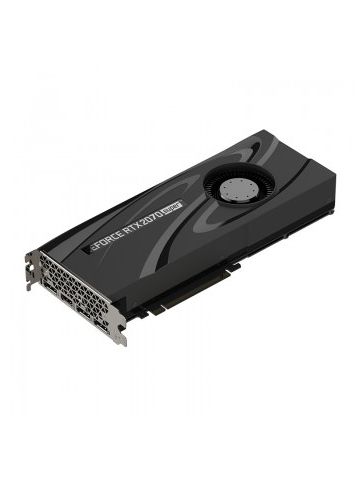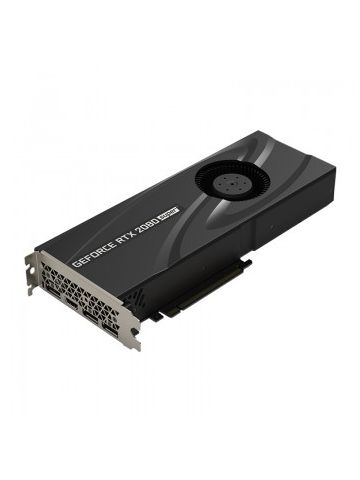Graphics card
-
IN STOCKPNY VCQP620V2-PB graphics card NVIDIA Quadro P620 V2 2 GB GDDR5
Brand: Pny SKU: VCQP620V2-PB Condition: NEW Call Us (0808 189 1246) -
IN STOCKPNY GF710GTLH2GEPB graphics card GeForce GT 710 2 GB GDDR3
Brand: Pny SKU: GF710GTLH2GEPB Condition: NEW Call Us (0808 189 1246) -
IN STOCKPNY VCQRTX8000-PB graphics card Quadro RTX 8000 48 GB GDDR6
Brand: Pny SKU: VCQRTX8000-PB Condition: NEW Call Us (0808 189 1246) -
IN STOCKPNY VCQP2200-PB graphics card Quadro P2200 5 GB GDDR5X
Brand: Nvidia SKU: VCQP2200-PB Condition: NEW Call Us (0808 189 1246) -
IN STOCKPNY VCG20708SBLMPB graphics card GeForce RTX 2070 SUPER 8 GB GDDR6
Brand: Pny SKU: VCG20708SBLMPB Condition: NEW Call Us (0808 189 1246) -
IN STOCKPNY VCG20608SDFPPB graphics card GeForce RTX 2060 8 GB GDDR6
Brand: Pny SKU: VCG20608SDFPPB Condition: NEW Call Us (0808 189 1246) -
IN STOCKPNY VCG20808SBLMPB graphics card NVIDIA GeForce RTX 2080 SUPER 8 GB GDDR6
Brand: Pny SKU: VCG20808SBLMPB Condition: NEW Call Us (0808 189 1246) -
IN STOCKPNY VCQP5000-PB graphics card NVIDIA Quadro P5000 16 GB GDDR5X
Brand: Pny SKU: VCQP5000-PB Condition: NEW Call Us (0808 189 1246) -
IN STOCKPNY VCG1660T6SFPPB-O graphics card GeForce GTX 1660 Ti 6 GB GDDR6
Brand: Pny SKU: VCG1660T6SFPPB-O Condition: NEW Call Us (0808 189 1246) -
IN STOCKPNY VCG20708SBLPPB graphics card NVIDIA GeForce RTX 2070 SUPER 8 GB GDDR6
Brand: Pny SKU: VCG20708SBLPPB Condition: NEW Call Us (0808 189 1246) -
IN STOCKPNY VCG20808SBLPPB graphics card NVIDIA GeForce RTX 2080 SUPER 8 GB GDDR6
Brand: Pny SKU: VCG20808SBLPPB Condition: NEW Call Us (0808 189 1246) -
IN STOCKPNY VCQP620DVIV2-PB graphics card NVIDIA Quadro P620 V2 2 GB GDDR5
Brand: Pny SKU: VCQP620DVIV2-PB Condition: NEW Call Us (0808 189 1246)
Buy the Best Graphics Card to Meet Your Business or Gaming Needs from Morgan Ingland Limited in US and UK
Have you ever wondered what a graphics card or GPU is? If yes, you are not alone. They are becoming the part and parcel of our lives. Being a specialized hardware equipment, most people find it hard to explain it to a general audience. Don’t worry! This write-up serves this very purpose. We will let you know everything you need to know about these high-tech pieces of hardware. Ready? Let’s dive in.
Briefly speaking, A GPU or Graphics Processing Unit is a hardware component of a computer and it is responsible for rendering and displaying visual graphics on monitors. GPUs take digital information from your computer’s memory and turn it into vibrant and realistic pictures that you see on screens. In other words, when you are watching a breathtaking landscape on screen, playing a hyper-realistic & immersive game, or scrolling down on web pages, it is the GPU or graphics card that is working behind all these tasks. They are responsible for every graphic output on screens, from the boot process through BIOS/UEFI to playing online games, video editing, and 3D modeling, they are the forces behind everything you see on monitors/displays.
What are the Components of a graphics card or GPU?
Normally graphics cards are required where a significant amount of graphic processing power is needed such as performing scientific simulation, playing online games, and editing 4K/8K videos. To effectively perform all these tasks, GPU comprises several components. Here is a breakdown of each component.
- GPU
- VRAM
- Cooling system
- Outputs
GPU is a core component; it is responsible for crunching complex numbers so that realistic graphics can be rendered in real-time. It performs the calculation and store data in a Video Random Access Memory or vRAM. vRAM is a dedicated memory for storing graphical data. It is totally different from RAM which is used by computers.
Various graphics cards use different cooling mechanisms for managing the heat created by the operation of the GPU. The cooling can be done by fans or by radial cooler. The radial cooler discharges the waste heat via an opening on PCIs. What’s more, some high-end graphics cards are equipped with a water-cooling mechanism. The purpose behind all cooling mechanisms is the same: to maintain the graphics clock of the graphics card.
Finally, there are output ports such as Display Port, DVI, HDMI, and the like for various ends such as power connections, connection with monitors, etc.
Which Graphics Card is Best for You?
When it comes to top-notch and best-performing GPUs, NVIDIA Graphics Cards and AMD Graphics Cards are top contestants in the graphics card market. Each offers you a power beast capable of heightening your digital experience. They offer wide-ranging GPUs, meeting specific user preferences, budgets, and performance levels.
Here is a brief comparison between the two in terms of price, gaming performance, adaptive sync, and laptop performance.
NVIDIA GeForce RTX Vs AMD Radeon RX Graphics Cards:
Here is the current and the latest NVIDIA GeForce RTX and AMD Radeon RX series.
The top-performing NVIDIA GeForce RTX graphics cards are enlisted here.
- NVIDIA GeForce RTX 4090
- GeForce RTX 4080
- GeForce RTX 4070 Ti Support
- GeForce RTX 4070 Ti
- GeForce RTX 4060
- GeForce RTX 3080
- GeForce RTX 3090
Likewise, here is the list of top-performing AMD Radeon RX GPUs.
- AMD Radeon RX 7900 XTX
- AMD Radeon RX 7900 XT
- AMD Radeon RX 7900 GRE
- AMD Radeon RX 7800 XT
- AMD Radeon RX 7700 XT
- AMD Radeon RX 7600 XT
Now, we compare the GPU series against some benchmarks.
NVIDIA GeForce RTX Vs AMD Radeon RX: Which One is Better in Gaming Performance:
You need to consider these features before making a final decision.
First, if you prefer an immersive gaming experience and hyper-realistic graphics, you must go for GeForce NVIDIA RTX. For instance, GeForce RTX 4090 features DLSS or Deep Learning Super Sampling technology, allowing users to enjoy Third-Gen Ray Tracing. DLSS delivers ultra-realistic ambient light effects, that ensure an immersive gaming experience.
Second, if you are a multi-player gamer and want minimized lag, you should go for AMD Radeon GPUs. And in this regard, AMD Radeon RX 7900 XTX can be a great choice.
Third, if you want more vRAM, AMD GPUs are your best bet. The enhanced vRAM allows not only more storage for games, they also helps your computer perform equally well when games become technologically more demanding.
NVIDIA GeForce RTX Vs AMD Radeon RX: Which is Better in Pricing:
Price is another major determining factor. Both GPU manufacturers come up with a diverse range of graphics cards with different price tags. But as a thumb rule, you need to take care of the following things:
For mid- and lower-tier GPUs, the prices of AMD graphics cards are more competitive and affordable. On the other hand, if you are looking for mid-tiered and high-end GPUs, NVIDIA GeForce GPUs are good options. They offer top-notch performance and cutting-edge features at a price that is quite high but offers the best Return on Investment.
NVIDIA GeForce RTX Vs AMD Radeon RX: Which is Better in Laptop Performance?
NVIDIA GeForce GPUs in general and RTX series, in particular, are thinner and have higher performance. That’s they, they are made part of all premium laptops except MacBooks. There are some AMD GPUs such as Radeon RX 6800 which are made part of Professional or gaming laptops, but overall, it is NVIDIA GeForce graphics cards that are clear winners here.
NVIDIA GeForce RTX Vs AMD Radeon RX: Which Fares Better in Adaptive Sync?
Adaptive Sync is an important feature that automatically and dynamically adjusts the display refresh rate to match GPU output. Both NVIDIA and AMD compete neck-to-neck when it comes to Adaptive Sync.
Overall, NVIDIA G-Sync is the favorite among game enthusiasts and professionals including the e-athletes, because it can manage to achieve lower latency and high-end graphics. However, the main constraint with using NVIDIA G-Sync is that you need to pair it up with a compatible monitor. This leads to significant cost escalation.
AMD Free-Sync performs equally well under normal circumstances and that is also at the lower price tag. But it can cause some ghosting issues. The differences between Free-Sync and G-Synch are minor, furthermore, the current AMD GPUs also support Xbox and PlayStation consoles. Therefore, in light of comparatively smaller prices and minor differences, budget-conscious gamers and creative professionals are advised to consider the AMD Radeon RX GPU series. Further, if you are still confused about making the final decision you can check our guide on AMD Vs. NVIDIA Graphics Cards.
Having compared these two GPU brands, we now look at some specific GPU models for your needs.
Our Top GPUs Pick for Every Purpose and Budget:
NVIDIA GeForce RTX 40 series is equipped with Ada Lovelace architecture and AMD Radeon RX 7000 series comes with equally impressive RDNA 3 architectures.
Here are some top picks for various end uses.
The best GPUs For High-Refresh Gaming:
NVIDIA GeForce RTX 4060, AMD Radeon RX 7800 XT, NVIDIA GeForce RTX 4090, AMD Radeon RX 7900 XTX, and Radeon RX 7900 XTX are some highly recommended GPUs for this use.
Best Graphics Cards for Mainstream Gaming:
AMD Radeon RX 7600, AMD Radeon RX 7700 XT, and NVIDIA GeForce RTX 4070 Super are some best available cards for enjoying mainstream gaming.
Final Thoughts:
Graphics Processing Units have become an integral part of every computer. Their ability to deliver hyper-realistic images and videos means that they have found applications in a diverse range of areas. Therefore, having the best quality GPU is essential for enhanced performance, better visuals, gaming gaming-specialized tasks such as scientific simulation, 3D modelling, and 4/8K video editing. Concerning this, AMD and NVIDIA are some of the best available options, featuring cutting-edge gaming performance, adaptive sync, architecture, AI capabilities, and more. But the final selections depend upon many factors that you must take into consideration.
We do hope that this write-up would have helped you better understand the graphics card and its significance.
Looking for A Top-Notch GPU at the Best Price Tag? Morgan Ingland Ltd is Your Sure Bet:
We are the top-ranking value-added reseller in the UK and beyond. Morgan Ingland Ltd specializes in offering top-notch GPU solutions at the best available price. We deal in best-in-the-market graphics card manufacturers including AMD, NVIDIA, Intel, and more.
We love to help you heighten your digital experience and enjoy the immersive and hyper-realistic gaming experience. Contact us today and elevate your graphics experience to the next level. Further, if you are still confused about making the final decision you can check our guide on AMD Vs. NVIDIA Graphics Cards.
FAQs for the Graphics Cards:
What matters most in a graphics card?
Clock Speed is an important consideration that you should take care of along with memory speed, architecture, and core counts.
What should I check before buying a graphics card?
If you are a gamer or a visual content creator, make sure that your graphics card must have at least 4GB of GPU RAM.
How are graphics cards measured?
Graphics cards are measured in frame rates, which indicates how many complete images the card can display on screen.
How can I test my graphics card?
You can Windows' built-in DirectX Diagnostic Tool to test your graphics card.











